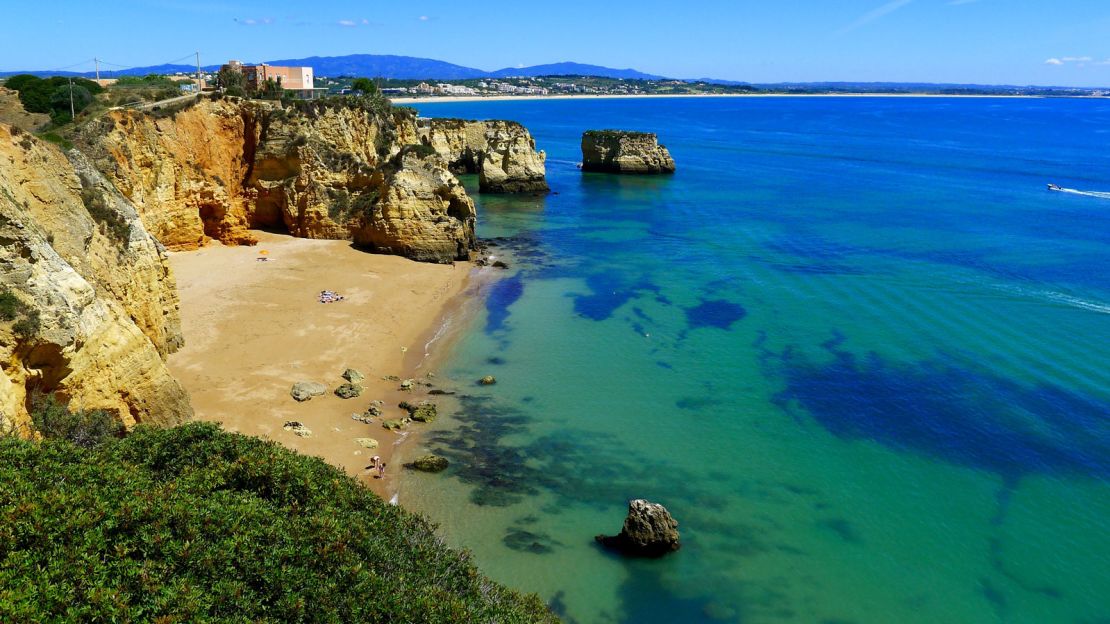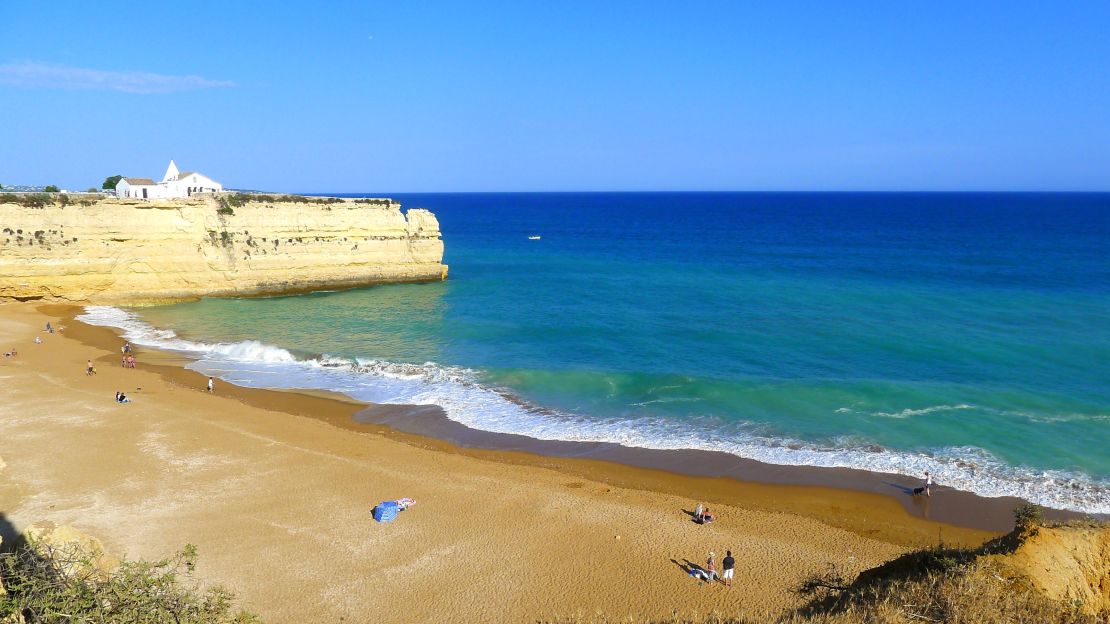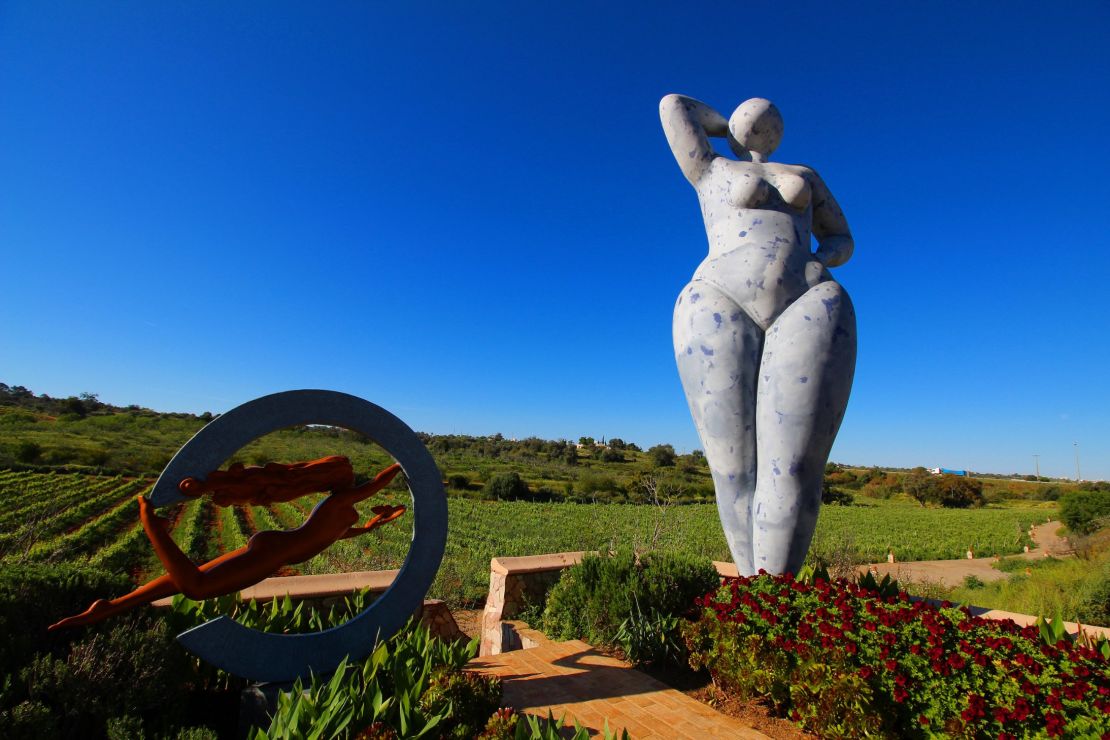Sometimes, the Algarve gets a bad rap. After six decades as a prime package-tour destination, it’s perhaps no surprise that sun-drenched southern coast of Portugal can trigger a sniffy reaction from travel snobs.
Yet it’s wrong to write off the Algarve.
If you travel to the western extremities of the 125-mile coastline, you’ll encounter a protected shoreline with wild, surf-ready beaches little touched by mass tourism.
Turn east – between Faro, the regional capital, and the Spanish border – and you’ll discover a coast fringed by spacious sandbar islands gently lapped by the Atlantic.
Even in the Algarve’s oft-maligned central strip, those in the know can find secret beaches, villages oozing charm, exciting new hotels and hidden restaurants serving the region’s Mediterranean-style cuisine.
Along the 10-mile stretch of shore between the low-cost, high-rise resort of Armação de Pêra and the Arade River estuary, satellite images show a string of bite-shaped indents in the cliff face, as if some giant sea-creature has nibbled away at the coast.
More than 40 such coves are cut into the honeycomb cliffs. All are lined with golden sand that slopes softly to the ocean. Their southern exposure means the beaches are perfectly positioned to trap the rays during the Algarve’s 300 days of annual sunshine.

‘King of the beaches’
While Praia da Marinha, which often gets a nod in best beaches listings, is famed for its yellow rock formations rising from a lapis-lazuli sea, all the coves have a special character.
Praia da Senhora da Rocha is overlooked by a whitewashed medieval chapel perched on an impossibly narrow promontory; Praia de Benagil is a fishermen’s hangout and starting point for boat trips to a spectacular domed sea cave; Praia dos Caneiros has some of the Algarve’s broadest stretches of sand, and is home to a renowned seafood restaurant called Rei das Praias (“king of the beaches”).
The shores here take their names from the mists of local folk history: There’s a “rabid dog beach,” “the brunette’s beach,” “mosque beach” or “little kisses beach.”
Some of the smaller strands are reachable only by scrambling over rocks, filing down scrubland paths or by taking a boat – guaranteeing solitude even during the height of summer.
Although there’s a scattering of vacation villas in places, much of the clifftop has escaped development. A three-mile hiking trail leads from Nossa Senhora da Rocha to Praia de Benagil, almost without passing any human habitation. Instead, there are shady umbrella pines, wild figs, and almond trees that bloom white in February and March.
All year there are flowers, but spring sees the scrubland erupt into blossom: Purple cistus, lavender, oleander and yellow gorse. The color scheme is augmented by dashes of pink hoopoes, azure-winged magpies, rainbow-hued bee-eaters and other exotic birdlife.
Should all that hiking leave you peckish, the trail is bookended by Michelin-starred restaurants. Ocean, located in the fancy Vila Vita resort just to the east of Nossa Senhora da Rocha, is one of four restaurants in Portugal with two stars from the French gourmet bible; Bon Bon, just inland in Sesmarias, secured its first star in the 2016 edition with dishes such as langoustines with ponzu and beetroots, or skate, smoked eel and leek.

The bigger picture
Amid the unblemished beauty, the area hasn’t entirely escaped the impact of mass market tourism.
Shooting its beachside fishermen’s homes with a narrow lens, the village of Carvoeiro still looks postcard perfect, especially at sunset. Widen the focus, however, and you’ll catch a sprawl of holiday homes and downtown streets jammed with souvenir stores and bars serving cut-price cider, technicolor cocktails and Premier League soccer on TV.
Other places, however, are better preserved.
Ferragudo is a painfully pretty pile of terracotta-roofed houses curled round a low hill between a 17th-century fortress (built to guard against pirates) and a line of riverfront restaurants which expertly slap locally-caught fish on their grills.
The village’s reputation as an artists’ retreat is maintained by the Studio Bongard, a traditional tile-covered Algarve house with a bougainvillea-shaded patio overflowing with ceramic sea-life and other phantasmagorical creations by the resident sculptors.
Ten minutes inland, the narrow lanes of Estômbar contain two treasures: A parish church whose baroque façade hides an interior lined with blue-and-white azulejo tiles and an 18th-century altar glistening with Brazilian gold; and O Charneco, a scrupulously traditional hole-in-the-wall restaurant that serves a seven-course parade of Algarve specialties which can include cuttlefish roe salad, rice with monkfish, roast lamb, and sweet pumpkin cake.
A wine-soaked comeback
Algarve cuisine is based on abundant seafood, pork and lamb raised in the hills, with fresh local fruit and vegetables. More than any other part of Portugal, it’s influenced by the Mediterranean and a legacy of over five centuries of Arab rule in the Middle Ages.
The Algarve played a key role in the successful 2013 campaign to secure UNESCO cultural heritage status for the Mediterranean diet. But while the region’s food has long been appreciated, its wines are only recently making a comeback.
Vines have been grown in the Algarve since Roman times, but local tipples were long overshadowed by the notoriously tasty nectars produced on the rolling plains of the Alentejo region, just to the north. Lately however, Algarve reds and whites are generating excitement in the Portuguese wine world and beyond, as a new generation of producers – many originally from outside – exploit the region’s blend of climates, soils and slopes.

At Quinta dos Vales, sitting in gently sloping countryside just outside Estômbar, visitors can tour the estate, stock up on award-winning wines and admire the work of the German owner, a banker-turned-sculptor whose fluid statues of curvy female forms loom over the vines.
A short drive north is Quinta do Francês, where Fatima and Patrick Agostini are winning kudos for wines produced at their spectacularly located estate between the Serra de Monchique mountains and Silves, a fortified city that once served as capital of a medieval Moorish kingdom. The couple were lured to the Algarve from the south of France by the region’s wine-making potential in 2002.
“There’s a great terroir here, a great climate. For wine-makers there’s plenty of variety – some places have sandy soils, but where we are there’s schist. It allows us to make wines that are full of fruit,” Fatima explains. “The way of life is more relaxed here. We love the climate, being close to the sea.”
The Algarve’s growing popularity – 2016 was a record year for visitor numbers – is triggering some exciting new accommodation options.
The first European resort of Thailand’s luxurious Anantara group opened in 2017 beside the beaches and golf courses of Vilamoura, while hip boutique hotel Casa Mãe has taken up residence beside the ancient city walls of Lagos, a port that was once the launch pad for Portugal’s 15th-century voyages of discovery and remains a gateway to more of the region’s fabulous beaches.
Underestimate it at your peril.


















